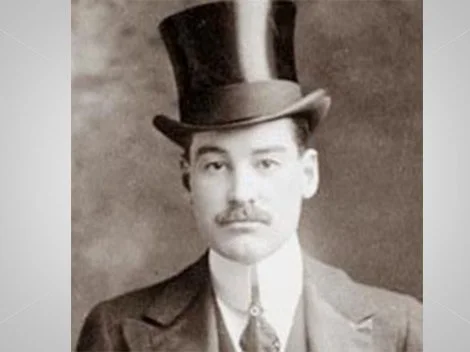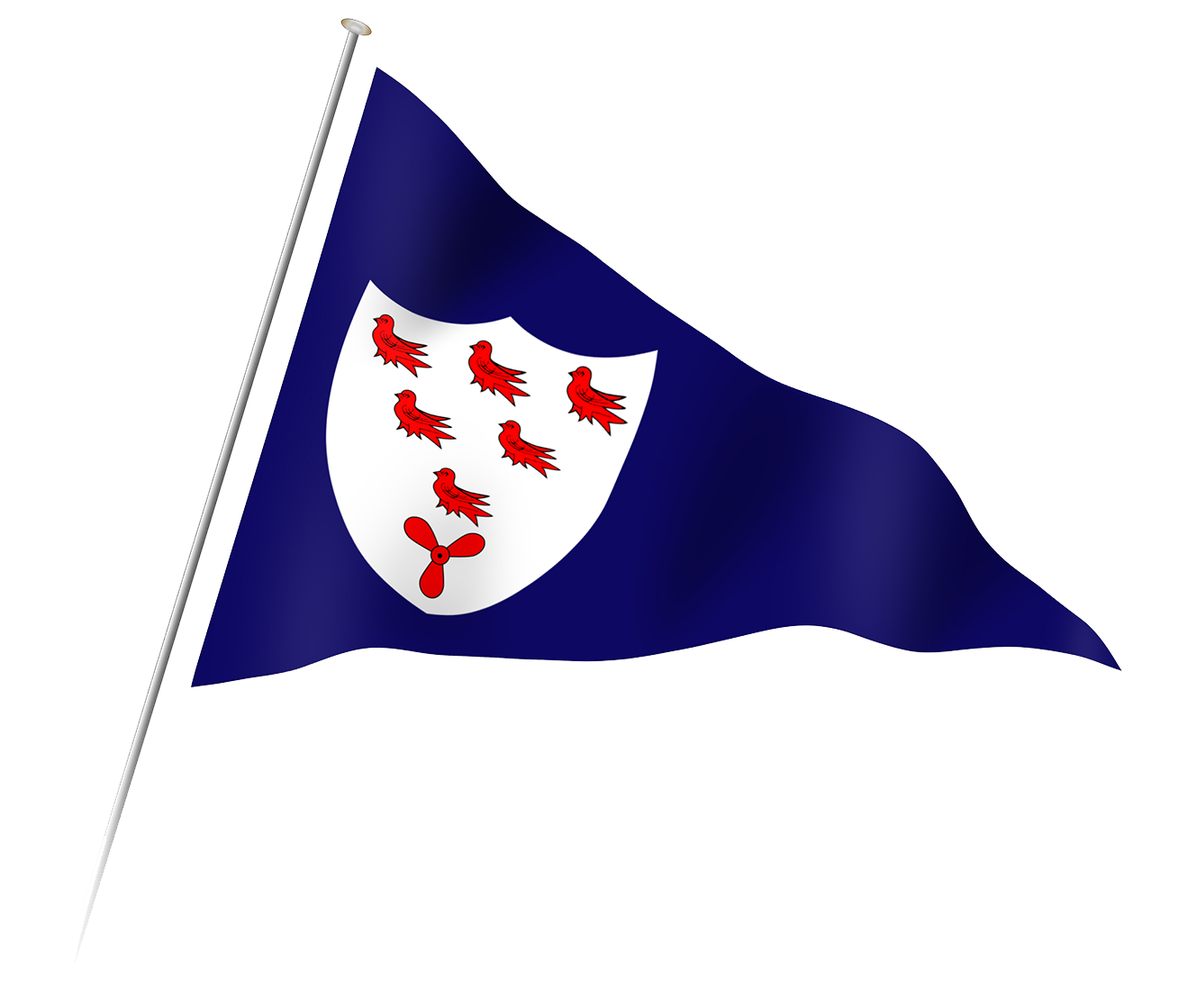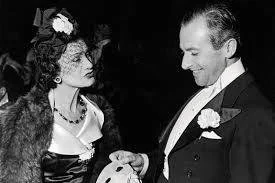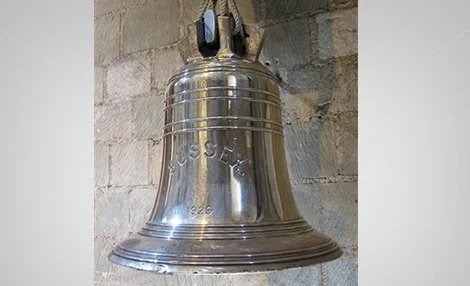
Since 1907
sussex motor Yacht Club
Our story begins in
APril1907
The Sussex Motor Yacht Club was founded in April 1907. The Bystander, a magazine of the day, reported in its May 22, 1907 edition, that “the inaugural luncheon of the club was held at the Grand Hotel, Brighton, on Saturday the 11th of May 1907; and, as the afternoon was delightfully fine, the opening cruise which followed was thoroughly enjoyed, particularly by the club’s guests.” The Bystander also reported that “Although only a month old, the Sussex Motor Boat Club already numbers upwards of one hundred members; and if, as seems probable, it is able to secure from the Corporation of Brighton the proposed site for its new club-house—on the seafront, where the Aquarium now stands, or, rather, lies buried—there is no reason why, in time, it should not develop into one of the most popular yachting centres on the South Coast.” The Bystander article reflects that the club’s chairman was Sir Theodore Angier, and that his speech “was really interesting, because there is nothing worth knowing about motor-boating that he doesn’t know.” Following the speeches, the members went for an hour’s run in members’ boats, and afterward, “we went ashore again, and were entertained at tea by Mr. Harry Preston at the Royal York [Hotel]….” Preston appears to have been one of the club’s organisers and, at the time, was the owner of the Royal York. It is unclear when the Club moved to premises at 7 Ship Street. but the Navy List of 1927 shows Middle Street as the Club’s address, whilst the Navy List for 1938 shows the address as 7 Ship Street. It would appear from various magazines and Admiralty correspondence that the first Commodore of the Club was the Duke of Westminster. In 1909 the Duke raced an un-named motorboat as Commodore of Sussex Motor Yacht Club in the Hydroplane Regatta held at Monaco. The Duke was also a member of the Royal Yacht Squadron but chose to enter and skipper his boat as an S.M.Y.C. member. In the same year he also entered the Cowes Motor Boat Regatta in his 40 footer, Ursula, and in August, raced for the Harmsworthy Trophy … READ MORE
A Legacy Takes Root – May 1908
The Motor-Car Journal, for Saturday, 9 May 1908, vol. 10, page 230, under the general heading of “Motoring Notes from Brighton” states: "Brighton rejoices in the possession of the only motor-boat club “whose current balance-sheet reveals a satisfactory financial position.” At least, so said Mr H.J. Mann, the secretary of the Sussex Motor Yacht Club, at its first annual meeting at the Grand Hotel last week. For a young enterprise, only a year old, the club may be regarded as a very healthy and promising youngster. It has about a hundred members at present, with a fleet of twenty-five boats, but several other craft are building and will be added this ensuing season. Viscount Curzon has accepted the appointment of Commodore, in succession to Admiral T.S. Brand, who is leaving Sussex, but Lieut. Sir Theodore Angier, R.N.V/R., and Lieut. O. Summer continues as Vice-Commodore and Rear-Commodore respectively " Also in 1908 Alfred Gwynne Vanderbilt 1887 – 1915 Alfred Gwynne Vanderbilt presented the ‘Venture International Challenge Cup’ to SMYC. The cup is an unusually large Edwardian silver trophy decorated with an enamelled SMYC burgee and engraved “Sussex Motor Yacht Club, The Venture, International Challenge Cup. The cup was to be used in 2016, 101 years after it was first presented as the prize for the Venture Offshore Challenge. A 1,000-mile race around Ireland. Unfortunately the race had to be cancelled. Alfred Gwynne Vanderbilt was an extremely wealthy sportsman and a member of the famous Vanderbilt family of philanthropists. Tragically, he died in 1915 at just 28 years old, when he was on the 32,000-ton luxury liner RMS Lusitania when she was torpedoed and sunk by U20. U20 was captained by Kapitän-Leutnant Schwieger. Lusitania sunk within 18 minutes from the time the first torpedo was fired at 14.09 on May 7th 1915 just off the coast of Ireland. Alfred was valiant to the last, helping women and children into the lifeboats and even though he was a non-swimmer, he and his valet handed and fitted their life-belts to a woman and her child… … READ MORE
A Rare Honour Bestowed – 1909
The use of the Blue Ensign in yachting is interesting. Some early clubs, including Royal Northern YC, Royal Western YC, and Royal Southern YC were granted use of the plain Blue Ensign during the 1830s and 1840s. Certain other clubs were awarded the plain Blue Ensign thereafter (e.g. Royal Clyde YC in 1857, Royal Cinque Ports YC in 1872), although many other clubs were granted the Blue Ensign defaced with a club badge or other emblem. In theearly 20th century, several motor yacht clubs including SMYC were awarded plain Blue Ensigns: Royal Motor YC in 1906, SMYC in 1909, and Royal Scottish MYC in 1928. Finally in 1928, the Admiralty ceased issuing new Warrants for the plain Blue ensign to clubs (armed services clubs excepted), in favour of a defaced Blue Ensign, and thus SMYC is one of the last U.K. clubs to receive a Warrant to wear an Undefaced Blue Ensign. Today there appear to be 18 clubs in the UK entitled to wear the Undefaced Blue Ensign, plus 12 overseas clubs, including the Royal Brighton Yacht Club of Australia. Apart from the naval Services clubs, SMYC may now be the only surviving non-Royal Club to be entitled to issue Permits for an Undefaced Blue Ensign… READ MORE
Speed, Spectacle & Survival – 1910
The Duke of Westminster figured in an exciting accident in Cowes Roads at about three o'clock this afternoon and had a miraculous escape from drowning owing to the capsizing of his new fast hydroplane, in which he had gone out for a trial spin. This peculiar looking craft – which is forty feet long – was launched only yesterday from the works of Messrs. S. E. Saunders and Co. (Limited), at East Cowes, where the Duke of Westminster’s famous motor boat Ursula – which holds the world’s speed record – was built. This morning the hydroplane went out for a spin, and was the object of considerable interest to many people who were on the Cowes parade and too many members at the Royal Yacht Squadron. The craft darted through the waves at a terrific place, throwing up a high volume of water on either bow like two fountains. She has been built specifically to represent Great Britain in the international races in America next month. This afternoon the Duke of Westminster joined the boat at East Cowes, and the hydroplane had a grand run across the Solent, attaining speeds of nearly 35 knots. There were on board Mr Robins, a representative of the firm which supplied the engines, and two engineers. Everything went finely, and the hydroplane was returning to East Cowes when, in making a sharp turn in Cowes Roads, almost in direct Line with the Royal Yacht Squadron Castle, the boat suddenly capsised, filling with water. Almost immediately she went down, stern first. The Duke, who was steering, and Mr Robbins were precipitated into the water. The two engineers clung to the side of the boat. Fortunately, the Duke and Mr Robins are good swimmers, and they managed to keep themselves afloat until the rescue party arrived. Motor boats and other boats from the yachts in Cowes Roads immediately went to render aid, including those from the steam yachts Portia and Belinda. The first, however, to arrive on the scene of the accident was the Duke of Westminster's own motorboat Loxwood, in which was lady Crichton, who had been watching the progress of the hydroplane. The Duke and Mr Robins were rescued apparently little the worse for their immersion, and the two engineers were also rescued and taken ashore. An attempt was made to tow the half-submerged hydroplane to shallow water, but she sank out of sight in several fathoms of water. The tugs Irishman and Malta put off to the scene of the accident on endeavoured with a long grapple to raise the hydroplane, but failed to locate her. The Duke of Westminster landed at East Cowes, and, after getting a change of dry clothing, caught the 4 o'clock boat on return to London. He seemed unharmed by his adventure, and was quite cheerful. The hydroplane was valued at over £3,000 pounds. Statement by the Duke The Duke of Westminster arrived at his London residence Grosvenor House at about 8 o'clock last night. He was accompanied by his half-brother, the Hon. Percy Wyndham. His grace had recovered from the serious effects of his emersion. Colonel Lloyd, his secretary, made the following statement to a representative:- The duke had a very narrow escape. He had been in the North of Scotland fishing and came back to London, going on to Southampton and then to Cowes, on purpose to test this hydroplane. Fortunately, he was followed behind by the motorboat of his half-brother the Hon. Percy Wyndham. The hydroplane, however, made faster speed and soon left the other boat behind, and in the course of time got about one mile to a mile and a-quarter ahead. Turning round; the hydroplane suddenly went over, and the duke, Mr Robins, who was steering, and the two engineers were thrown into the sea. The engineers, being only lightly clad, were able to cling to the side of the hydroplane, but the duke, encumbered by a lot of heavy clothing - Macintosh, jersey, etc. had difficulty in keeping above the water. Mr Robins helped him to keep afloat, but twice the duke went down, being pulled up by Mr Robins each time. Finally, the Loxford came up to the duke and took him aboard. Just in time, for he was nearly done, and they had to apply artificial respiration to bring him round in the motorboat. The Duke was only just saved. Needless to say, he is very grateful to Mr Robins, who he considers saved his life. The Duke of Westminster was born in 1870 and succeeded his grandfather in 1800. In 1901 he married Constance Edwina, daughter of Mr cor West. He served in the South African war as aide de camp to Lord Roberts. Lady Crichton is his aunt. He has taken a great interest in motor boat racing and the Ursula referred to by our correspondent won the Coupe des Nations in the Monaco motor boat meeting last April, exhibiting a speed of about forty-three land miles per hour…READ MORE
1913 – A Race from Sky to Sea
In November 1913, SMYC in association with the directors of the London Aerodrome, Hendon, arranged a London to Brighton handicap race. The first stage, after passing over Brighton Pier ended at Shoreham airfield. Then the final stage was the return to London. The Vice Commodore of SMYC, Mr Harry Preston, presented a valuable trophy and a first prize of £100 and a second prize of £25.
1922–1923 – A New Chapter Begins
The club applied for ‘Royal’ title but this was declined. SMYC became a Limited Company and One Pound shares were sold to members.
1931 – A Trophy Fit for a Prince
The “Britannia Trophy” was presented to SMYC by HRH David, the Prince of Wales, subsequently Edward VIII. Originally the Trophy was for 4hp motor boat races on the Thames but fell out of use at the commencement of World War II. The Trophy was next presented in 1987 for an offshore power boat race from Tower Bridge to Brighton with an overnight stop at Ramsgate (Royal Temple Yacht Club – awarded a Warrant for the Undefaced Blue in 1898). The Trophy was presented in the subsequent two years but not since.
1947 – Racing Into Post-War Waters
he Sailing Division began racing Merlins off Shoreham Beach, moving to the Lighthouse Club in 1949 and subsequently to Soldiers Point, initially on a 7 year lease but later on a 99 year lease. Until about 2015, Shoreham Sailing Club continued to use SMYC as an adjunct to its title.
1950 – Echoes of the Fleet
Following the de-commissioning in 1949 of HMS Sussex, a Royal Navy heavy cruiser, SMYC was successful in acquiring the Ship’s Bell. This was later handed by Commodore Fred May, to the Sussex Royal Naval Volunteer Reserve (RNVR) but when this unit was disbanded in 1994, the Ship’s Bell was presented to Chichester Cathedral where it now hangs. Also in 1950, SMYC purchased jointly with Sussex Yacht Club, Stowe’s Yard, now the premises and boatyard of Sussex Yacht Club. In the late 1970’s, during one of its many financial crisis’, SMYC sold its half share of the yard to Sussex Yacht Club.
A Bell of Honour – 1977
The Ship's bell from H.M.S. Sussex in Chichester Cathedral where it is currently on display. (From a private collection) The commissioning of H.M.S. Sussex By Tony Drury The Sussex Division of the RNVR (Royal Naval Volunteer Reserve) established its headquarters at Hove in November 1903; it was to remain operational for 91 years. For the first 48 years of its existence the unit had no ships name, it was simply titled the 'Headquarters Sussex RNVR Division'. At noon on Saturday, 28th April 1951 this situation was changed when the Division was commissioned with the very apt ship's name 'H.M.S. Sussex'. A New Ship's Name Prior to this time the name was in use by a veteran World War Two Cruiser which was withdrawn from active service to be sold for scrap in 1950. The commissioning warrant was read at a ceremony held at the RNR Battery attended by the Mayor and Mayoress of Brighton, and Mr. William Teeling, M.P. for Brighton, and his wife; the Mayor inspected the guard of honour at the commencement of the ceremony. Also present was Commodore Earl Howe O.B.E., V.R.D., R.N.V.R., who had been the Commanding Officer of the Division from 1907 - 1939 and Commodore Fred May of the Sussex Motor Yacht Club. An Old Ship's Bell When the former Cruiser was scrapped, the Sussex Motor Yacht Club was successful in obtaining its Ship's Bell from the Admiralty and .Commodore May, on behalf of the Yacht Club, handed over the bell to Captain T. D. Manning, O.B.E., V.R.D., R.N.V.R., the Division's current commanding officer. On handing over the bell Commodore May said "It is no ordinary bell. It is a bell with a wonderful record. It was through the good offices of one of our members, Mr. W. T. Curtis - Wilson, that this bell was acquired from the Admiralty. Whenever this bell rings it should bring to your minds memories of a great ship." A new home The Divisions headquarters at the RNR Battery, Hove, closed, and transferred to a £140,000 new HQ at MaxwellWharf, Shoreham which was formally opened by Princess Alexandra on 12 July 1968. H.M.S. Sussex was granted the Freedom of the Borough of Hove in 1977 as part of the Queens Silver Jubilee celebrations, and the unit was to remain open until March 1994 when the Division was disbanded under defence cuts. The Ship's bell was presented to Chichester Cathedral where it is currently on display… READ MORE
A Chapter of Loss and Legacy – 1993
For some years the Club had been in financial difficulty and in the late 1980s SMYC applied to its membership for debentures. Some 350 members paid up but this did not halt the financial decline and in 1991 the club invited its debenture holders to surrender their debentures in favour of Lifetime Membership; some 300 members did so but this did not prevent the club from becoming insolvent and in 1993 the Club went into receivership. This resulted in the sale of the prestigious premises in Ship Street, Brighton and the closure of the Club. Unfortunately, many of the club’s trophies, not just boating trophies but ones for other activities such as golf and tennis, other fixtures, fittings including furniture and items comprising all the monogrammed plate, crockery and cutlery and other memorabilia particularly a framed letter from Rudyard Kipling, were ‘liberated’ by members and have never been returned to the Club. What little remained, was rescued by Brighton Marina Yacht Club including the Venture Cup and the Britannia Trophy… READ MORE
A New Foundation – 1995
In 1995, wishing to preserve the history, tradition and uniqueness of SMYC as being the only non-Royal club in the world to hold a Warrant for its members to wear an Undefaced Blue Ensign, the then Commodore of Brighton Marina Yacht Club (BMYC) John J Duffy, determined to see if it was possible to resurrect the historic Club; little did he realise that it was going to take him five years to realise this ambition. John’s first task was to establish whether it was legally possible to resurrect the Club and this proved to be relatively easy, as he discovered that, in law, a club is the sum of its members, not its premises nor its possessions. Having discovered that SMYC still existed in name by having 300 Life Members, he then decided to establish whether the Warrant for the Undefaced Blue was still valid. This proved to be much more difficult. First starting with the Admiralty his enquiries led to the Ministry of Defence and, initially, to Michael Portillo as Secretary of State for Defence. An election in 1997 brought in the Labour Party and John was concerned that the new Secretary of State, George Robertson would not take the same interest as his predecessor. Contrary to expectations, the newly appointed Minister, enthusiastically instructed his staff to assist in any way they could. Since 1928 no yacht club, other than armed services clubs, had been granted the right for its members to wear an Undefaced Blue Ensign on their boats. In 1922, their Lordships, in a meeting at the Admiralty, even stated that the Warrant granted to SMYC in 1909 “had been rashly given” but they did not withdraw it. At the time there was only one record of a yacht club having had its Warrant withdrawn and then reinstated which was the Royal Plymouth Corinthian and it looked as though it was unlikely that it would be possible to get a grant of reinstatement for SMYC, therefore, John had to establish that the SMYC Warrant was still valid. The MoD was of the view that the Club’s Warrant was valid if a permit issued under the Warrant was still in use by a yacht and a copy could be produced. Fortunately John knew of a former Commodore of SMYC who continued to use his permit – a copy was produced and sent to the MoD… READ MORE
Revival and Renewal – 2000s
By 2000 John managed to contact around 250 of the 300 Life Members, most of whom agreed that the Club should be resurrected. Despite an overwhelming majority being in favour of reconstitution, John considered that, in itself, a verbal agreement was insufficient and he called a General Meeting of the membership which was held on 7th December 2000. Around 70 people attended and it was unanimously agreed to reconstitute SMYC. Once the Club was formally reconstituted, the issuing of Warrants for its members to wear the Undefaced Blue Ensign on the boats recommenced. The Club is deeply indebted to John Duffy for its survival and John has to be commended for his persistence and commitment to the unique identity of the Club… READ MORE
Power, Prestige & Open Seas – 2004
Unseasonable weather greeted the P1 Powerboats when they held their British Championships at Brighton between July 23rd and July 25th 2004. Sussex Motor Yacht Club acted as the hosts to the championships with active support from Brighton Marina Yacht Club and the event being staged out of Brighton Marina. Racing took place over two days with a prior day’s practice in what proved to be deteriorating conditions. There were two classes competing comprising a total of 14 boats some capable of 80 mph although the big seas made those speeds impossible. Racing on the second day was delayed by the race organiser in the hope of an improving seas state. Advice from SMYC was that the weather would deteriorate in the afternoon rather than improve. With no racing in the morning, racing commenced after lunch despite the worsening conditions and by the end of the afternoon, two boats had sunk and one had caught fire, beaching itself on the foreshore. With sufficient races having been completed to qualify as a championship the winners were declared and trophies presented by Commodore of SMYC, Geoff Kemp. First in the Supersport Class was FAINPLAST (Ernesto ASCANI/Marco PENNESI/Massimo ZANCO/L.BISCEGLIA) of Italy receiving the Britannia Trophy and the winner of the Evolution Class was CANTIERI DARMA (BIANCHI DINO FIORI/Franco BIANCHI/Aldo GLIORI/O.GRANUCCI) also Italy receiving the Venture Cup otherwise known as the Vanderbilt trophy. Thousands of spectators watched the event from the west arm of Brighton Marina and from the promenade… READ MORE
Centenary in Style – 2007
Members celebrated the Club’s centenary, holding a formal dinner at the Hotel Alias Seattle, Brighton Marina.
Charting a Digital Course – 2013
The Club joined the world of the internet by launching its first website. The new website established the Club’s presence on the internet and promoted the benefits of the Club, detailing its unique history. The site had a positive affect on the recruitment of new members and has become the prime source for new recruits…READ MORE
A Bold New Course – 2018
Following elections and a change of the club committee, SMYC is now committed to seeking new horizons and making the Club relevant, exciting and modern. Fully embracing new technology and ecological boating, while fully honouring our glorious past and achievements. Our new Commodore Capt. James Humphrys RN (Ret.) (formerly of HMS Ark Royal), will lead SMYC in a new direction. We have members spread right along the Sussex coast as well as many beyond the borders of Sussex. Overseas membership is rising rapidly and a new interest in all things ecologically friendly will be the focus of the Club. The Club has launched a totally redeveloped interactive website with news, history, galleries and more, using a responsive design that adapts to the world of many devices, whether mobile, tablet or desktop. It is hoped that the new site will become a focal point for existing members and also attract many more new members.
2025 and Beyond…
The story continues—and it’s an exciting one. If you’d like to know what we’ve been up to lately or are curious about becoming a member, we’d be delighted to welcome you aboard. Do feel free to get in touch.







